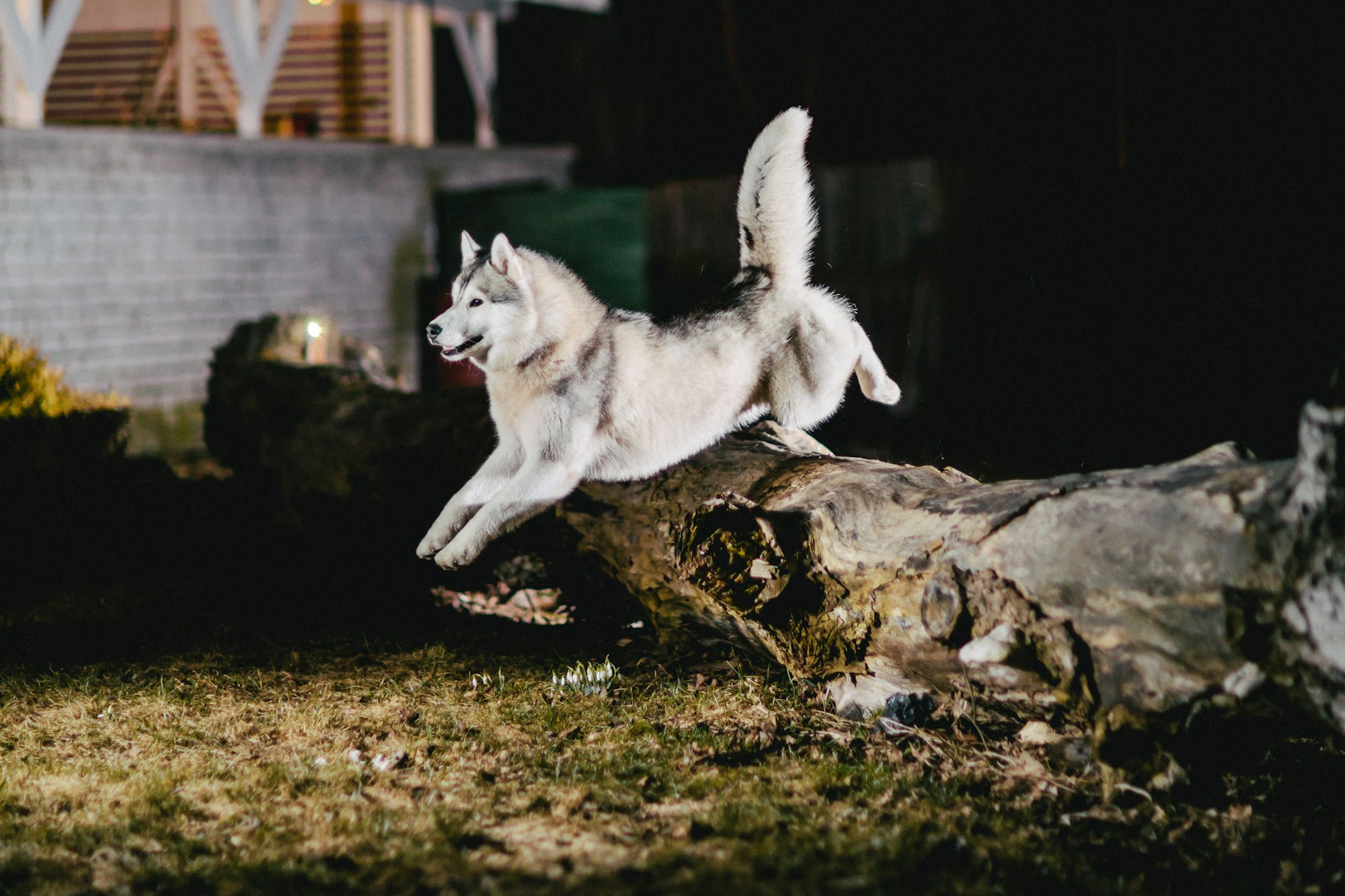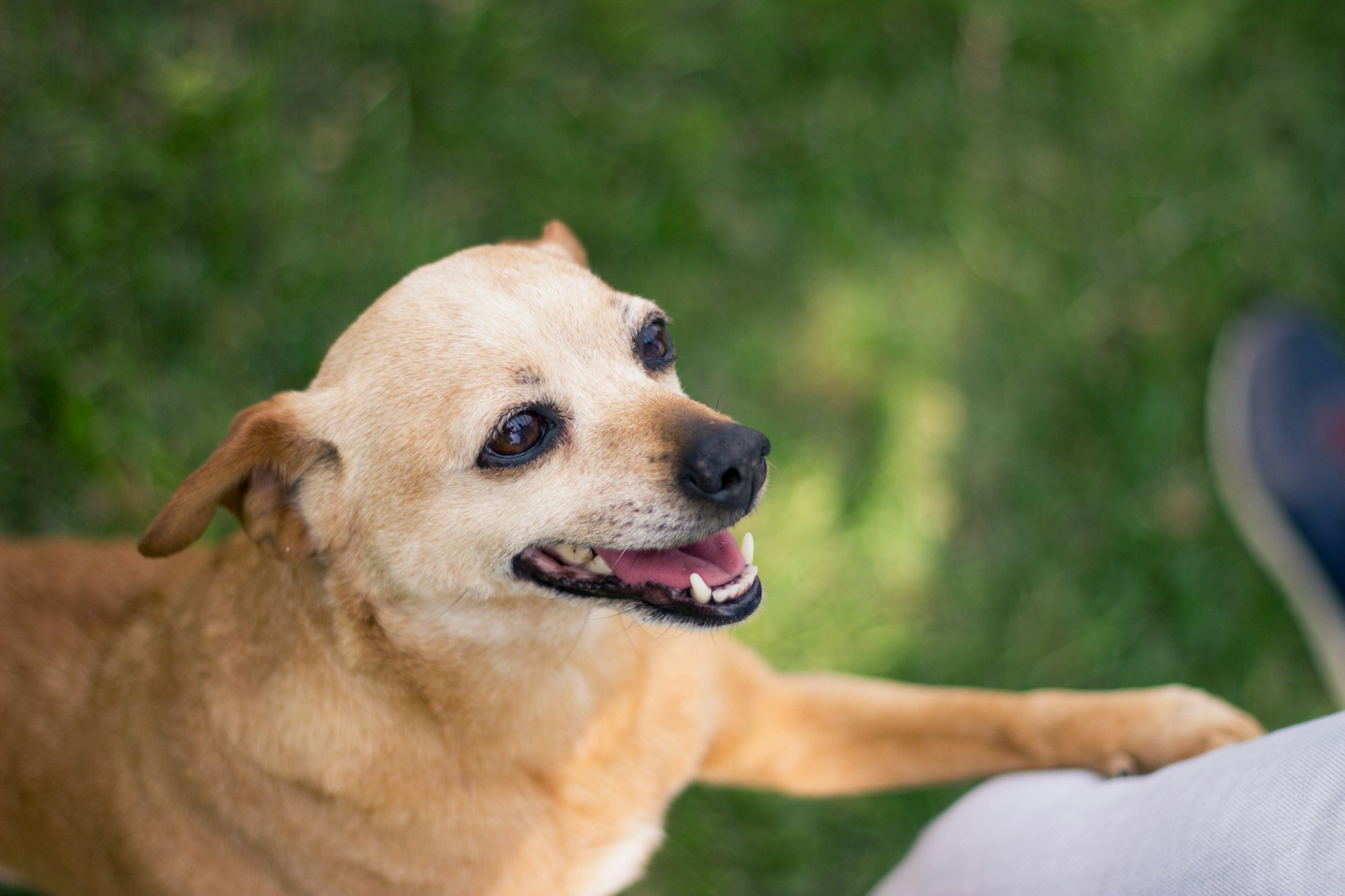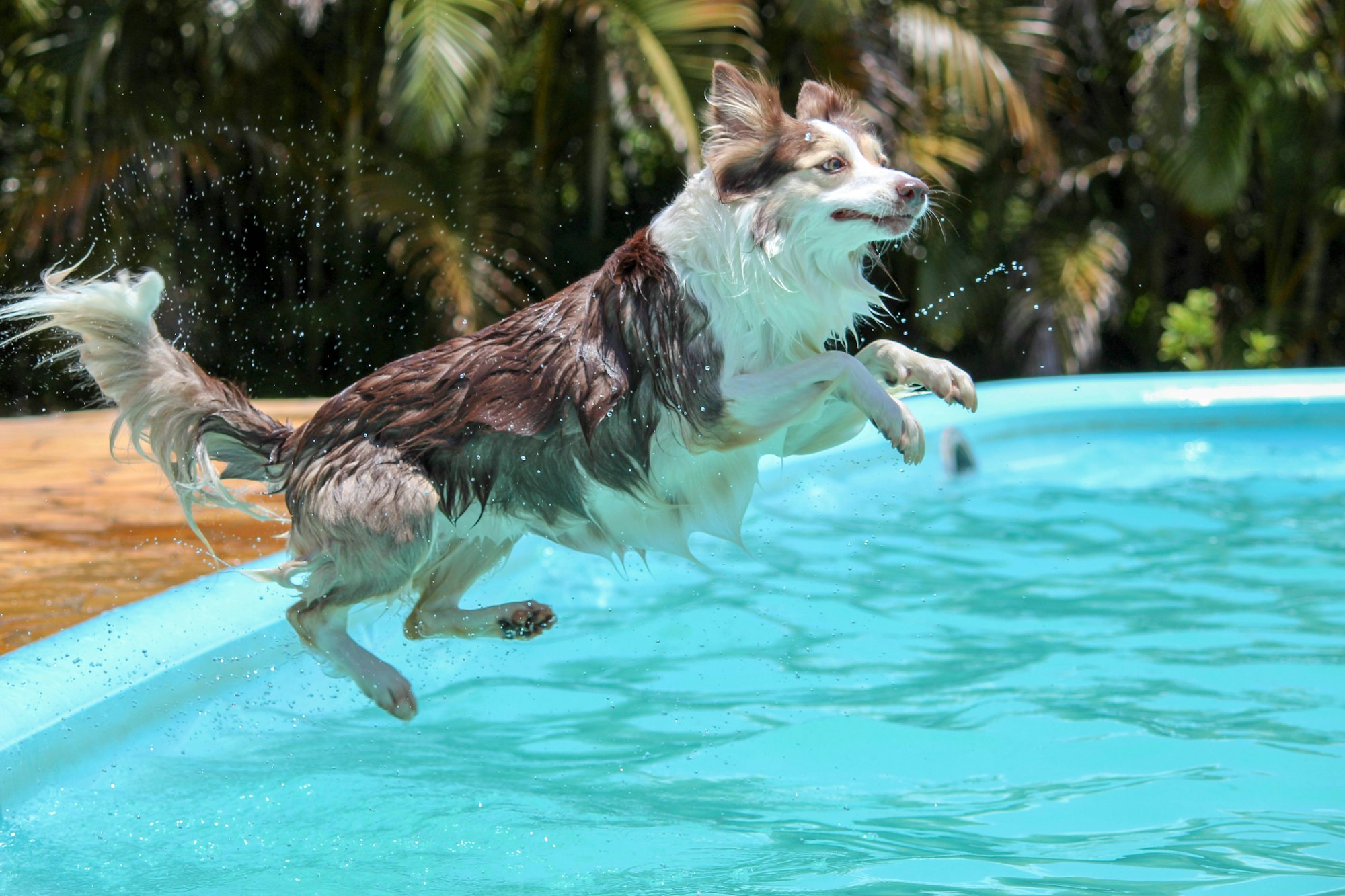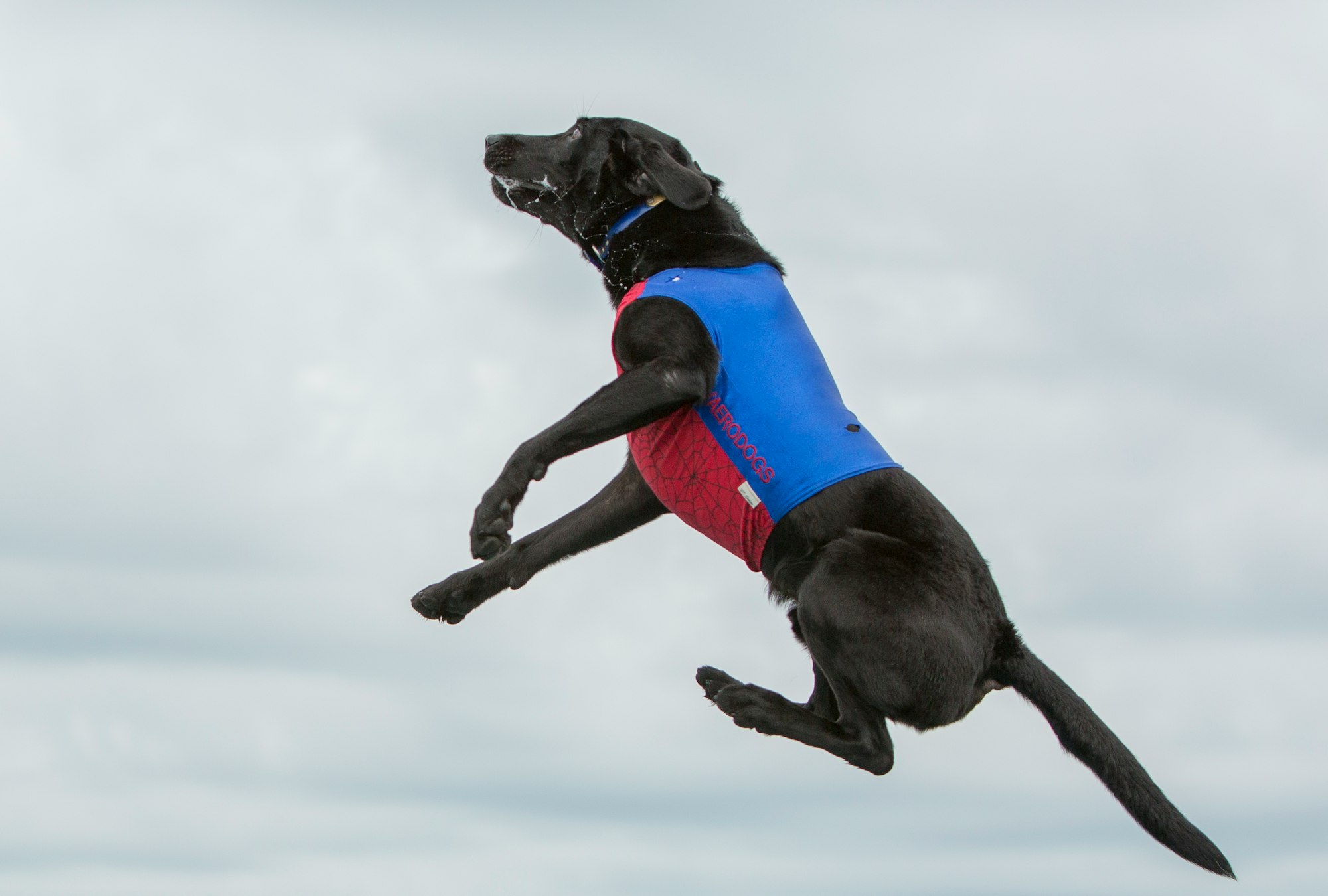Dogs are joyful and exuberant creatures, and one of the ways they express their excitement is by jumping. While this behavior may seem harmless, it can become a problem if your dog jumps on guests, strangers, or even on you. Not only can it be annoying, but it can also be dangerous, especially if your dog is large or if there are young children around. Here, we will explore effective methods to stop a dog from jumping and promote good behavior.
In the introduction, we will briefly discuss the issue of dogs jumping and its potential problems. We will also mention the importance of training and consistency in addressing this behavior.
Understanding the Reasons Behind Jumping

To effectively address and stop a dog from jumping, it's essential to understand the reasons behind this behavior. Here are some common reasons why dogs jump:
1. Excitement and Greeting: Dogs may jump as a way to express their excitement and greet people. It's their way of showing enthusiasm and seeking attention.
2. Attention-Seeking: Some good family dogs learn that jumping up on people gets them the attention they desire. They may jump to get petted, played with, or simply to gain your focus.
3. Lack of Training: Dogs may jump if they haven't been taught proper greeting manners or if their training in this area has been inconsistent.
By understanding the underlying motivations for jumping, you can tailor your training methods to address the specific cause and work towards modifying this behavior.
Consistency in Training

Consistency is key when it comes to training your dog to stop jumping. Here are some tips to maintain consistency in your training efforts:
1. Set Clear Rules: Establish clear rules regarding jumping and ensure that all members of the household are aware of them. Consistency across the board will prevent confusion and provide a unified approach to addressing the behavior.
2. Use Positive Reinforcement: Reward your dog for desired behaviors and ignore or redirect them when they exhibit jumping. Consistently reinforce the behaviors you want to encourage while avoiding rewarding or reinforcing jumping.
3. Practice Regularly: Dedicate regular training sessions to address jumping. Make it a part of your routine to work on alternative behaviors and reinforce consistent responses.
4. Involve Family and Guests: Educate your family members and guests about the training process. Request their cooperation in not rewarding jumping and instead encouraging appropriate greetings.
5. Patience and Persistence: Changing behavior takes time and patience. Be persistent in your training efforts and remain consistent in your approach, even if progress is gradual. Consistency will pay off in the long run.
Remember, consistency in training is crucial to help your dog understand what is expected of them. By consistently reinforcing desired behaviors and addressing jumping in a unified manner, you can effectively stop your dog from jumping.
Teach Alternative Behaviors

Teaching your dog alternative behaviors is an effective way to redirect their jumping impulses. By providing them with alternative actions that are more appropriate, you can help them learn new ways to express their excitement and greet people. Here are some alternative behaviors you can teach your dog:
1. Sit Command: Teaching your dog to sit on command is a valuable alternative to jumping. Start by holding a treat close to your dog's nose and slowly move it upward, causing their head to tilt back. As their head tilts back, their bottom will naturally lower into a sitting position. Once they are in a sitting position, reward them with the treat and verbal praise. Repeat this process consistently, associating the word "sit" with the action, until your dog learns to sit on command.
2. Four-on-the-Floor Greeting: Encourage your dog to keep all four paws on the floor when greeting people. Before your dog has a chance to jump, instruct them to "sit" or "down." If they comply, reward them with treats and praise. If they start to jump, immediately turn away and ignore them until they calm down. Once they are calm and have all four paws on the floor, resume attention and reward them for the desired behavior.
3. Shake Hands/Paw: Teaching your dog to offer their paw for a handshake can be a cute and polite way to greet people. Start by extending your hand palm-up and saying "shake" or "paw." Gently lift their paw and give it a shake. Reward them with treats and praise. Repeat this process, gradually reducing the physical assistance until your dog learns to offer their paw willingly.
4."Off" Command: Teaching your dog the "off" command helps redirect their jumping behavior. Whenever your dog jumps on you or someone else, firmly say "off" and turn away. By removing your attention, you are teaching them that jumping leads to a loss of interaction. When they have all four paws on the ground, reward them with attention and praise.
Be Sure, consistency is vital when teaching alternative behaviors. Practice these commands in different situations and gradually increase distractions. With patience and positive reinforcement, your dog will learn the desired behaviors and reduce their jumping tendencies.
Reinforce Positive Behavior

Reinforcing positive behavior is an essential part of training your dog to stop jumping. By rewarding them for exhibiting the desired behaviors, you encourage them to repeat those actions. Here are some tips for reinforcing positive behavior:
· Verbal Praise: When your dog remains calm and doesn't jump, offer enthusiastic verbal praise such as "Good job!" or "Well done!" in a cheerful tone. Let them know they are doing the right thing.
· Treats: Use small, tasty treats as rewards for good behavior. Whenever your dog refrains from jumping and keeps all four paws on the ground, immediately give them a treat. This positive reinforcement strengthens the association between the desired behavior and the reward.
· Petting and Affection: Dogs love attention and physical touch. Use gentle petting, belly rubs, or a pat on the head as a form of positive reinforcement. When your dog stays calm and avoids jumping, give them affection to let them know they are behaving well.
Remember to reinforce positive behavior consistently. Timing is crucial; reward your dog immediately after they exhibit the desired behavior so they can make the connection between the action and the reward.
Avoid Rewarding Jumping

Avoid inadvertently rewarding your dog for jumping behavior, as it can reinforce the undesired action. Here's what you can do:
· Withhold Attention: When your dog jumps on you or others, refrain from giving attention, eye contact, or physical contact. Turn away from your dog and fold your arms to signal that jumping is not acceptable. Wait until they have calmed down and dog paws are on the ground before engaging with them.
· Ignore Unwanted Behavior: If your dog jumps to seek attention or during playtime, completely ignore their jumping. Stand still, look away, and avoid any interaction until they stop jumping. Once they are calm, reward and praise them for the appropriate behavior.
· Redirect Focus: Instead of rewarding jumping, redirect your dog's attention to an alternative behavior. For example, ask them to sit or perform a trick they have learned. When they comply, offer praise, treats, and attention. This redirection helps them understand that good behavior is rewarded, not jumping.
By avoiding the reward of jumping and redirecting their focus towards desired actions, you can effectively discourage the behavior and encourage more appropriate ways of greeting and seeking attention.
Utilize Physical Barriers
Using physical barriers can be a helpful strategy while you work on training your dog to stop jumping. These barriers provide a temporary solution to prevent your dog from jumping on guests or accessing certain areas. Here are some ways to utilize physical barriers effectively:
1. Baby Gates: Install baby gates in areas where you want to limit your dog's access. For example, if you want to prevent your dog from jumping on guests as they enter the house, place a baby gate at the entrance to create a barrier. This allows your dog to observe without the opportunity to jump.
2. Exercise Pens: Set up an exercise pen or playpen in a designated area of your home or yard. This provides a safe and confined space for your dog to play and move around without the chance to jump on visitors or roam freely.
3. Crate Training: Crate training can be beneficial, especially when you cannot directly supervise your dog. Use a crate that is appropriately sized for your dog, providing them with a comfortable space where they can rest and relax. This prevents them from jumping on people or engaging in unwanted behaviors.
4. Leash Restraint: When guests arrive or you're in a situation where jumping may occur, keep your dog on a leash to control their movements. This allows you to manage their behavior and prevent jumping by gently guiding them to sit or stay by your side.
Make Sure, physical barriers are not a substitute for training. They are meant to be used as a temporary aid while you work on teaching your dog appropriate behaviors. Gradually reduce the reliance on physical barriers as your dog learns and improves their behavior.
Seek Professional Help if Needed
If you're struggling to stop your dog from jumping despite your best efforts, don't hesitate to seek professional help. A certified dog trainer or behaviorist can provide expert guidance tailored to your specific situation. They have the knowledge and experience to assess your dog's behavior, identify underlying causes, and develop a customized training plan to address the jumping issue effectively. Professional help can be especially beneficial if your dog's jumping poses a safety concern or if you feel overwhelmed with the training process.
Final Opinions
In conclusion, stopping a dog from jumping requires patience, consistency, and understanding. By following the techniques outlined in this article, such as teaching alternative behaviors, reinforcing positive behavior, avoiding rewarding jumping, utilizing physical barriers when necessary, understanding the reasons behind jumping, and maintaining consistency in training, you can effectively curb this behavior.
Remember to be patient with your furry friend as they learn new behaviors. Consistency in training, positive reinforcement, and redirecting their focus will help them understand what is expected of them. If needed, seek professional assistance to ensure you're on the right track. With dedication and proper training, you can successfully teach your dog to greet people politely without jumping. Enjoy the process of training and bonding with your canine companion as you work together to improve their behavior.
FAQs
Here are some unique frequently asked questions (FAQs) related to stopping a dog from jumping:
Q1: Why does my dog jump on people?
A: Dogs may jump on people to greet them, seek attention, or display excitement. It is critical to address this behavior to prevent any potential issues.
Q2: How long does it take to stop a dog from jumping?
A: The time it takes to stop a dog from jumping can vary depending on the dog's personality, breed, and consistency of training. With patience and consistency, you can see improvement over time.
Q3: Can I use punishment to stop my dog from jumping?
A: Punishment is not recommended as it can create fear or separation anxiety in your dog and may worsen the behavior. Positive reinforcement and redirection techniques are more effective and humane.
Q4: What if my dog only jumps on certain people?
A: If your dog jumps on specific individuals, it may be due to their behavior or reactions. Communicate with those individuals and ask them to follow the same training guidelines to help learn your dog's communication behavior.
Q5: Can professional dog training help with jumping?
A: Yes, seeking professional help from a certified dog trainer or behaviorist can provide valuable guidance and training techniques to address jumping behavior effectively.
Q6: Can I use a shock collar to stop my dog from jumping?
Using a shock collar is not recommended for addressing jumping behavior. It can cause fear, anxiety, and potential harm to your dog. Positive reinforcement and humane training methods are more effective and should be prioritized.
In this article, we have discussed effective methods to stop a dog from jumping. By understanding the reasons behind jumping, being consistent in training, teaching alternative behaviors, and reinforcing positive behavior, you can successfully address this issue and promote better behavior in your furry friend. Remember, patience and positive reinforcement are key in training your dog.






